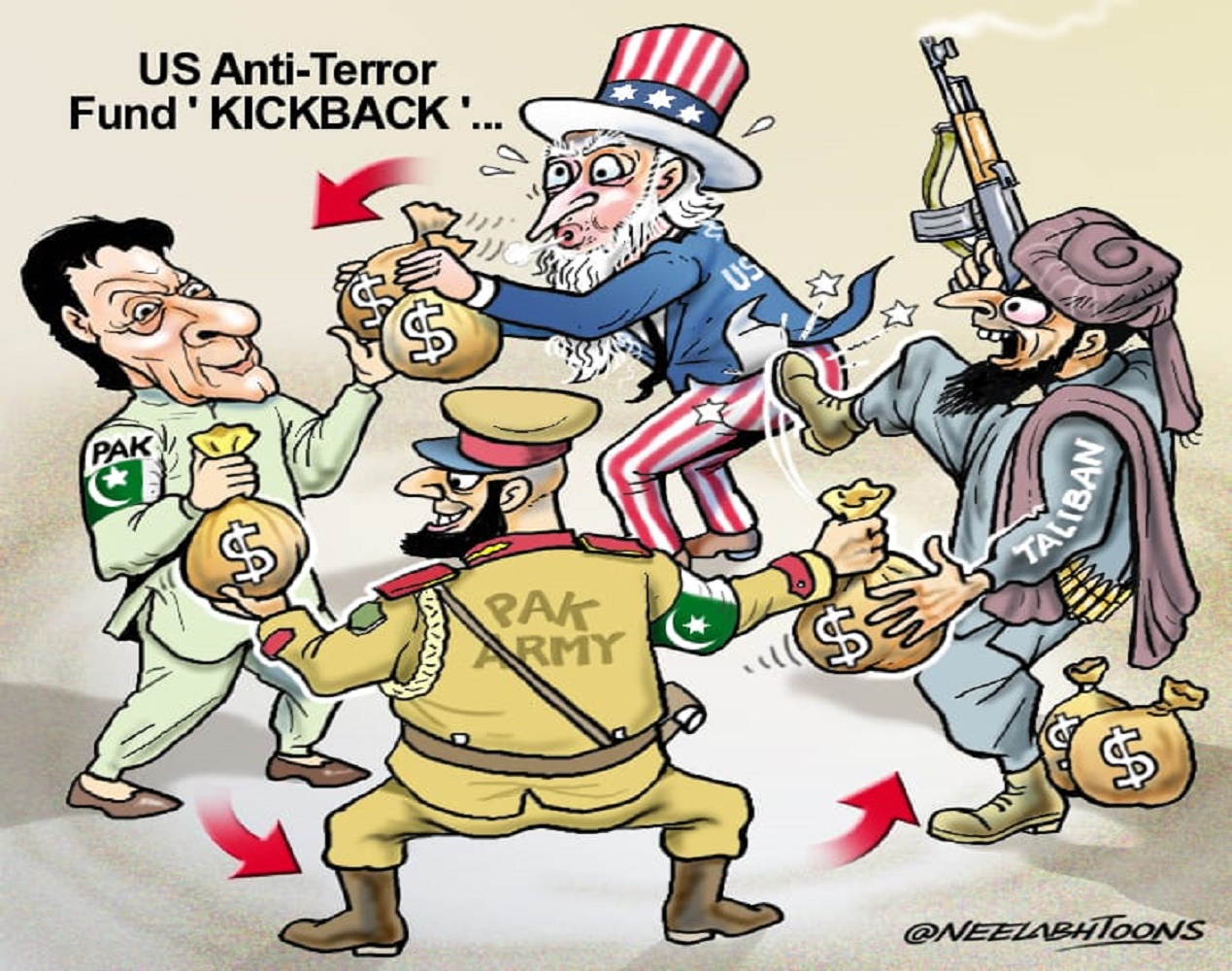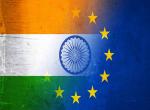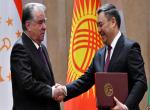Pakistan’s location, for long, has been a source of attraction in America’s foreign policy. However, Pakistan has leveraged its geography to continuously venture into strategic adventures that have endangered global peace and security.
Before India got its independence, Nehru had once said that India’s location conferred upon it a strategic advantage as it was geographically so located, that it was the meeting point of West, Central, South, South-East and East Asia. These linkages had political, economic, and strategic benefits and thus, greatly contributed to India’s prosperity in the past.
However, with the partition of the sub-continent, India lost its unique advantage of geographic location to Pakistan. While India was cut off from the West and Central Asia, Pakistan inherited linkages to the West, Central, South, and even South-East Asia (through East Pakistan).
And ever since the partition, the history of International Politics has been guilty of conjuring up developments that have made Pakistan’s geography appealing to the West, particularly the U.S. However, this obsession has not ended well for the global community.
The Politics of Cold War
After the Second World War ended and as the Cold War began to unfold, a British school of thought, led by Olaf Caroe, believed that control of oil fields in the Gulf and South-West Asia was eminent for the West to maintain its strategic edge over the Soviet Union. And in that regard, Pakistan’s location was critical to dominating the region (Caroe 1976). Further, as the ideological battle intensified, the U.S. believed that Pakistan’s alignment was important to halt the Soviet’s export of communism southwards and limit its influence in Afghanistan. Thus, Pakistan became a preferred and indispensable partner for the West in securing their Cold War interests.
Consequently, Pakistan became the founding member in two of the U.S. created cold war alliances in Asia, SEATO & CENTO (the U.S. never joined CENTO but remained actively involved in it), further polarizing the already charged Cold War atmosphere in Asia. Pakistan also received security assurances against a communist invasion that was applicable against Indian aggression as well.
Pakistan’s tryst with geography received another kick with Richard Nixon’s election in 1968. Nixon and Kissinger were anxious to create an opening with China and capitalise on the Sino-Soviet split to weaken the Soviet and the communist bloc. Pakistan, while being an ally of the West, also shared cordial relations with China (Pakistan had concluded a boundary settlement agreement with China in 1963 and had illegally ceded Shaksgam Valley to China). Hence, Pakistan acted as a conduit in facilitating US-China rapprochement as its location would allow visiting U.S. officials to secretly travel to China and come back.
The Soviet invasion of Afghanistan in 1979 was the third such occasion during the Cold War that boosted Pakistan’s strategic appeal in the West. The U.S., led by the cold war logic, decided to support the mujahideen’s war efforts against the Soviet Union. With the US-Iran relations beginning to deteriorate after the Iranian Revolution and the STANs forming part of the erstwhile Soviet Union, Pakistan’s location made it the sole available option and access to Afghanistan to support the mujahideen (See map).
Pakistan joined U.S’ game in Afghanistan for its own inherent reasons. Ever since its creation, Pakistan had been insecure about a potential emergence of Pashtun nationalism in Afghanistan that could undermine Pakistan’s claim to Durand Line and the Pashtun-dominated area (currently Khyber Pakhtunkhwa) within its border. Further, Pakistan falsely believed that India and the Soviets (through Afghanistan), were acting in concert to sandwich it through a Pincer Movement. These doubts pushed Pakistan to seek a strategic depth in Afghanistan against a perceived oversized Indian influence.
9/11 and U.S.’ GWOT
Just as one would have thought that the end of the Cold War would somewhat diminish Pakistan’s strategic utility for the U.S., the 9/11 attacks took place. The U.S. vowed to avenge the attack and declared the Global War on Terror (GWOT). It demanded that the Taliban regime of Afghanistan sever its ties with Al Qaeda, the perpetrators of the attacks, and turnover the accused. When the Taliban did not relent, the U.S. decided to enter Afghanistan. The U.S.’ GWOT and decision to intervene and stay in Afghanistan brought Pakistan back into strategic relevance for similar reasons as during America’s earlier intervention in Afghanistan in the 1980s. Pakistan’s location allowed the U.S. to overcome its limitation with regard to access to Afghanistan to sustain its war and logistics. Pakistan joined America’s war on terror. The U.S. forces toppled the Taliban regime within a week, forcing it move towards insurgency. Though a western-backed regime was placed in Kabul, the fight against the Taliban insurgents continued.
U.S. Retreat amidst Taliban’s Rise
After having spent more than a trillion dollars and lost close to 2500 American soldiers in 20 years of its presence in Afghanistan, the U.S. came to realise the futility of the never-ending war and the increased cost attached to it. The U.S.’ preoccupation with the Afghan war had allowed China to grow unabated in the Pacific and had begun to threaten U.S.’ interest in the region. The dire need to make a face-saving exit from Afghanistan compelled the U.S. again to turn to Pakistan to facilitate a negotiated settlement with the Taliban. This time, Pakistan’s location was not the primary factor but an associated factor as Pakistan had created Taliban on its territory and had been harbouring Taliban leadership – Quetta Shura or Rahbari Shura – within its territory throughout the U.S.’ war on terror.
Aware of the Pakistan-Taliban relationship and anticipating a possible crisis in event of a Taliban takeover of Afghanistan, the regional actors fearing a spill-over reached out to Pakistan to extract security assurances from both actors. Pakistan had again become a hot commodity in the international market. The world expected Pakistan’s cooperation in arresting the violence in Afghanistan and persuading the Taliban to agree to a peaceful settlement or some form of a power-sharing arrangement that could avoid Afghanistan’s slippage into a civil war after U.S. withdrawal. Consequently, Pakistan was a member of all the regional and global groupings on the Afghan situation: Six plus two, Troika+ and Quad 2.
The Cost of Pakistan’s Co-optation
While the U.S. remained strategically glued to Pakistan’s geography, Pakistan leveraged its geographic asset to escape the consequences of its nefarious activities that endangered global peace and security. Two of the major global threat that the world faces today – nuclear proliferation and global terrorism – can be primarily attributed to Pakistan.
Lately, it is also responsible for creating a humanitarian crisis in Afghanistan that threatens to exacerbate another major global challenge: the migration & refugee crisis.
Nuclear Proliferation
This was the time when the U.S. was indebted to Pakistan for its role in facilitating U.S.-China opening and its support during the Soviet invasion of Afghanistan in the late 1970s and the 80s. Pakistan was elated with the newly formed US-China-Pak axis and the critical role it played in its evolution. Pakistan first extracted (assurances from China to support its nuclear programme. (Paul Summer, 2003) Pakistan acquired the critical technology and later proliferated it to North Korea, Iran, and Libya (Sanger Feb 2 2004).
Pakistan’s nuclear scientist, Abdul Qadeer Khan, on February 4, 2004, in a (press conference to the Pakistani media, admitted to stealing and selling nuclear technology to Iran, North Korea and Libya without the knowledge of Pakistani authorities. (Find the text of the full statement (here). Interestingly, the Pakistani government (for whom the admission should have come as a huge embarrassment) responded by granting a national pardon to Khan without imposing any liabilities.
The U.S. chose to turn a blind eye to these developments as a quid pro quo for Pakistan’s valuable assistance during the Cold War years. Moreover, it recused itself from censuring Pakistan in any respect. Today, the nuclearization of Iran and North Korea is not only a major foreign policy irritant for the U.S. but a global threat as well.
Global Terrorism
Andrew Heywood in his book Global Politics writes that the rise of Islamic terrorism was a response to three reasons: corrupt authoritarian regimes in the Middle East which came to be viewed as ‘apostates’ for failing their citizens; U.S.’ rising influence in the Middle East and its role in sustaining these authoritarian regimes in the region; and lastly the impact of Iranian Revolution which unleashed a trend of religious fundamentalism in the region (Heywood 2014). However, Pakistan’s role in bringing terrorism to the global stage can hardly be ignored.
When the U.S. decided to support the mujahideen in Afghanistan with Pakistan’s assistance after the Soviet invasion, Pakistan found a readymade pretext to involve itself in Afghanistan to further its own agenda within a larger U.S objective by leveraging its geography. The U.S. was narrowly committed to displacing the Soviet-backed communist regime of Najibullah. While it did not matter to the U.S. who displaced the regime, whether democratic or authoritarian or even Islamists, so long it was not communist, Pakistan had a very specific objective of installing an Islamist puppet regime for reasons discussed before.
The Pakistani establishment in pursuit of its interests began radicalising an entire generation of Pashtun refugees in its madrassas to prepare them to fight the jihad against the Soviets. This group later in 1992 formed the Taliban in Kandahar and seized power in 1996. Taliban was an asset that Pakistan cultivated and aided in seizing power as insurance against any future Afghan claim over Pakistan controlled Pashtun region and question over Durand Line.
Pakistan also played an instrumental role in the formation of another radical Islamic outfit, the Al Qaeda. During the Soviet-Afghan war, Pakistan offered its territory and assistance to Osama Bin Laden, to recruit and mobilise youths from around the Islamic world to volunteer to wage jihad against the Soviets. This network later in 1988 formed the organization Al Qaeda in the Pakistani city of Peshawar.
Taliban and Al Qaeda, united by ideology and sheltered by Pakistan came to closely cooperate in a post-Soviet Afghanistan. Thus, when the Taliban rose to power in 1996, Afghanistan became Al Qaeda’s hub for its operation. This Taliban-Al Qaeda duel was ultimately responsible for the 9/11 attacks which marked the advent of global terrorism.
Pakistan believed, and rightly so, that its geography would provide it with enough strategic space and buffer to push its own agenda and yet escape any consequences for its actions as it was strategically too important for the U.S. to be condemned or censured.
Subverting U.S.’ War on Terror & Engineering a Humanitarian crisis in Afghanistan
Pakistan’s accession to the U.S. war on terror was a classic case of paradox. It is a curious case wherein Pakistan provided logistical support and ‘strategic depth’ to both the warring parties of the war, the U.S. and the Taliban.
It was an open secret that the Taliban leadership, the ‘Quetta Shura’ was hosted in Pakistan. Taliban fighters were allowed safe passages to retreat within Pakistan borders when under a U.S. attack. Pakistan provided the Taliban with military, medical and monetary aid to sustain the U.S. onslaught. Eventually, the Pakistan-Taliban nexus succeeded in frustrating the U.S. into leaving Afghanistan in the hands of the very same people whom the U.S. had toppled 20 years ago. The U.S. now has to live with the ignominy of having lost the war on terror, denting its credibility as a reliable security partner and its superpower image.
Thus, Pakistan used its geography and location to keep the Taliban movement alive, which has emerged as the single biggest factor in the Taliban’s return to power in Afghanistan.
Pakistan further played a destructive role after the conclusion of the Doha Agreement by sabotaging the intra-Afghan dialogue. Reports from security agencies confirmed that Pakistan based terror groups were fighting alongside the Taliban in violation of the Doha agreement. Pakistan continued its aid by means of men and money to sustain the Taliban and refused to withdraw support that would force the Taliban to the negotiating table. The result was unabated violence, killing hundreds of innocent civilians and Afghan soldiers. Taliban’s seize of Kabul has ushered in a crisis of humanitarian scale in Afghanistan. And to Pakistan, the present crisis in Afghanistan is a minor cost that the Afghans have to endure to secure Pakistan’s larger objectives.
India: A Natural Casualty
India has been a natural casualty of Pakistan’s unique advantage in terms of geography. Pakistan made its cooperation with the West contingent on the latter’s alienated policy towards India. Consequently, more than India’s policy of non-alignment, it was the West’s preference for Pakistan that determined its approach towards India during the Cold War.
Kashmir came as the first setback for India. Chandrashekhar Dasgupta in his book, ‘War and Diplomacy in Kashmir, 1947-1948’, has described how United Kingdom led the U.S. and the UN to treat Pakistan’s invasion of Kashmir (which had a standstill agreement with Pakistan and had later decided to accede to the Indian Union) as a bilateral dispute rather than an act of aggression which otherwise would have forced the Pakistani Army to withdraw from the occupied territory (Dasgupta 2002).
Furthermore, Pakistan leveraged its geography to arm and militarise itself with sophisticated U.S. weapons and military equipment that tilted the military balance heavily in its favour vis-à-vis India, both in qualitative and quantitative terms. This perception of having a qualitative edge over India and the belief of being capable of humiliating India in a war led Pakistan to pursue one in 1965.
Conclusion
History is witness to the fact that while geography has proved to be its greatest strategic asset, Pakistan has leveraged it to pursue its nefarious designs at the expense of larger peace and security.
So far as the U.S. is concerned, observers believe that despite having embarrassed itself on multiple occasions by co-opting Pakistan, America’s strategic obsession with Pakistan might not end yet as it would look to retain some sway in Afghanistan going ahead, and Pakistan may remain its only access to exercise some influence in Afghanistan given a hostile Iran in the west and Russia-backed Central Asian Republics in the north.
Works Cited
- Caroe, Olaf. 1976. The Wells Of Power: The Oilfields of South Western Asia. Da Capo Press.
- Dasgupta, Chandrashekhar. 2002. War and Diplomacy in Kashmir 1947-1948. Sage Publications
- Heywood, Andrew. 2014. Global Politics (Second Edition). Palgrave Macmillan.
- Paul, T.V. Summer,2003. "Chinese-Pakistani Nuclear/Missile Ties and the Balance of Power." The Non-Proliferation Review 4
- Sanger, David Rohde and David E. Feb 2 2004. "Key Pakistani Is Said to Admit Atom Transfers." The New York Times
(The paper is the author’s individual scholastic articulation. The author certifies that the article/paper is original in content, unpublished and it has not been submitted for publication/web upload elsewhere, and that the facts and figures quoted are duly referenced, as needed, and are believed to be correct). (The paper does not necessarily represent the organisational stance... More >>
Image Source: https://pbs.twimg.com/media/E9pNzIKVIAEgqiH?format=jpg&name=900x900











Post new comment